The Middle East Labyrinth
Finally, I think the incredibly complex situation of the Persian Gulf deserves some additional words.
The Middle East and Asia have been the cradle of political intrigues and backstabbing since the beginning of recorded history, and in 1985 not much has changed: The starting scenario has Iran and Iraq in full war mode, and at least four different types of political and military allegiances:
-
The European strategic alliances (NATO and Warsaw Pact), guaranteed to go to war should the conflict extend into the areas covered by their respective treaties.
-
The Almost-Soviet-Aligned countries (Syria, South Yemen, and occasionally Iraq), taking advantage of Soviet arms shipments but having no formal treaty with Soviet Union.
-
The Almost-Non-Aligned countries (Saudi Arabia, Kuwait, Oman, etc), relying on western weapons and support, but here too having no formal treaties with US or other Western countries. Moreover, their internal propaganda requires them to publicly hate and denounce Israel, bringing its own special problems with US and European relations.
-
Iran, standing alone and intermittently receiving weapons, equipment, and spare parts from the most improbable sources: China, North Korea, South Korea, United States, France, United Kingdom, East Germany and even Israel. Each of these countries had its own motivations and friendship is hardly one of them.
When you add a Soviet invasion of Iran to this already dangerous mixture, your Molotov Cocktail is ready to be served. There are myriads of possible developments, from the Red Army overrunning Iran before anybody could effectively react (very improbable) to a strong, multi-national coalition turning Iran into a well defended fortress (also very improbable). In the middle, there’s everything else: Will Iraq allow Soviet aircraft or even troops on its territory? Is Iran going to accept help from the Great Satan before it’s too late? Are the Saudis willing to concede their bases to United States? Could the desperate situation force Iran into accepting a humiliating peace with Iraq? Is the US Coalition going to decide that, given the strategic situation, Iraq is an enemy too? Is the war getting hot enough to convince NATO to start mobilisation? Are the Soviets going to attack in Europe too?

All these possibilities have to be considered and are managed by the interaction of military events, Event Cards, Tension Level and Commitment Level of each country and alliance. In the end, both sides have the tools to try moving the balance in the desired direction, but nobody can be sure of what is going to happen, or when.
In short, welcome to the command seat. As Truman used to say, the buck stops here.
1985: Sacred Oil Developer’s Notes by Tony Morphet
As Fabrizio stated above: 1985: Sacred Oil is the third and last module of the 1985 series. In terms of my personal involvement it is the second, after 1985: Deadly Northern Lights. Fabrizio has discussed the genesis of the project and why he did it. I would merely state that it is my firm belief that the series has grown in stature with every game iteration. That is not hubris or self-congratulatory back slapping on my part but a recognition that the product that Fabrizio has designed has gone from a simple, but extremely impressive, update of a 1970s central European tank and plane slugfest into a solid attempt at presenting the player in 2021 with a chance to try and make the really big boy decisions that might have been required at the highest level in 1985, and yet is still fun to play.
Sacred Oil completes this progression by offering a foray into global deployments and logistics without degenerating into the 21st century’s equivalent of “Campaign for North Africa” – quite a feat I think.
1985 – An Alternative Universe
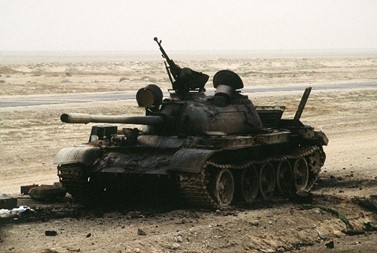 Many of you will be aware of the alternative universe that Fabrizio has conjured from the dark recesses of his mind. There are snippets in his blogs, his jottings, or even just the simple paragraphs that introduce each scenario. This 1985 is dark, it has depths, nuances, nooks and crannies that are all Fabrizio’s and are clever and credible. Yet this gaming world is not a complete fantasy it is firmly anchored in the real world of the late 70s and early 80s and the events leading up to our 1985 are deemed to be the same as the real history of the world.
Many of you will be aware of the alternative universe that Fabrizio has conjured from the dark recesses of his mind. There are snippets in his blogs, his jottings, or even just the simple paragraphs that introduce each scenario. This 1985 is dark, it has depths, nuances, nooks and crannies that are all Fabrizio’s and are clever and credible. Yet this gaming world is not a complete fantasy it is firmly anchored in the real world of the late 70s and early 80s and the events leading up to our 1985 are deemed to be the same as the real history of the world.
Part of my job is and has been to help mesh these two world views together to create a coherent and believable whole. “So what” you cry. Well, it is important because the view of the world of 1985 that is adopted has huge impacts on the force levels, and reinforcement strategies, available to the US and the USSR. Therefore, it impacts on all the components of this game. Getting this right makes Sacred Oil feel as though it could have been….
The Persian Gulf Trap – It’s not 1990!
When we started out on this project there appeared to be a perfect blueprint for this campaign – Desert Storm and all its supporting operations. In fact Fabrizio was convinced of said fact. After all, here was a force taken from America and Europe shipped to the gulf and… and.
My first actions were to prove that this was mostly NOT a good blueprint. Yes, it provided some good logistic information on ship loading and tonnage of sea lift required. Yes, it focused on aircraft staging but as I quite forcibly pointed out there were also some major differences:
-
Desert Storm took place in a completely benign environment. The USSR and WP had disappeared there were no threats to the Desert Storm shipping. Ships could go when and where they liked without a need for convoys or escorting of any sort.
-
There were few real threats to the docks and airbases – perhaps some SCUD but nothing like that which might have been 5 ¼ years earlier.
-
There was no time pressure – not really – as long as the coalition of the willing could be held together Saddam was going nowhere and there were no other threats that might have engulfed the US Faction! Scarcely the same as 1985: Sacred Oil with its impending Soviet annexure of the Gulf.
The Historical Perspective – June 1985
So, if it isn’t Desert Storm et al what is it? Quite simply it’s the US nightmare of the 1980s as pointed out in the many Rand corporation quotes in Fabrizio’s piece on game design.
Fabrizio has touched upon the first of the key factors; this was never going to be a NATO operation, at least not in 1985. Although part of this Soviet power play might have got close to Turkey, as long as the USSR refrained from incursions, respected the borders and neither sank shipping nor shot down aircraft nothing was going to happen from a NATO perspective. There are no circumstances that I can conceive that would have seen the withdrawal of NATO combat power from the NATO area whilst the USSR and the WP were extant.
Similarly, there are no political circumstances that I can imagine that would see the bulk of Western European nations or a secular but poor Turkey becoming involved in a Southwest Asian military adventure, to quote 1990 – “No Blood for Oil”. This leaves us solely with the core members of the “US Faction”; USA, UK, and France, who had aspirations or pretensions in the region. I shall deal with them in turn, their strengths and weaknesses and the implications for this theatre of operations.
Soviet and Western Militaries’ Capabilities – June 1985
Despite the accelerating decline in status and real power in 1985 the USSR still held a lot of really good cards. Depending upon its planned strategic objectives it could transfer forces from one Front to another with impunity and without discussion. In any potential operation it was going to be the aggressor so could select the time and place for the initial operations and the sequencing thereafter.
The same was not true in the West, in fact the opposite was nearest to the truth. Everything had to be debated, agreed, costed, and implemented and that all in the harsh light of public opinion and media experts. Therefore, let us look at the state of the Soviet Union and the three key western nations and draw down some implications for this campaign – Is this really the third in a trilogy of NATO vs the WP or is it something else entirely?
The United Kingdom
I’m British so let’s start with them. In 1985 the UK’s military reputation was riding high. Victory in the Falklands three years earlier had shocked the world, saved the Royal Navy and paused the reduction of the UK Armed Forces to a euro centric regional force. It had caused a new military doctrine to start to be developed and it had questioned the 1977 political decision to withdraw from “East of Suez”. However, for my fellow countrymen and to Fabrizio’s enormous disappointment this does not mean that huge British forces would have been available for Southwest Asia in 1985. After all – “it’s not 1990“!
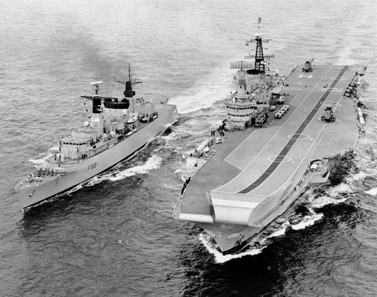 The Royal Navy
The Royal Navy
(RN) is present, it is in the area from the beginning. The so called Armilla Patrol had been established in the Gulf to protect tankers in 1980. It had not only survived, but had also increased in size. In addition to the surface vessels of the Patrol there was almost always a nuclear-powered attack submarine (SSN) on station, sometimes more than one. Occasionally a diesel submarine (SSK) might also make an appearance but really not much else. In 1985 as per standard British governmental policy NATO came first, second and third. For the Royal Navy the requirement to provide a minimum of one and preferably two Anti-Submarine Warfare (ASW) carrier groups to support the US Carrier Battle Groups (CVBG) in the Northern Atlantic and the requirements of the UK/NL Landing Force meant that as long as the Gulf was neither a vital British interest nor a NATO mission the bulk of the Navy remained deployed on NATO tasks and British sovereignty missions. Just look at how much of the NATO naval force the RN provides in Deadly Northern Lights! How else did the UK justify a 4 star NATO Commander in Chief Channel (CinCCHAN) and all the other senior NATO naval posts it filled in 1985. Naturally there were options to increase the presence of the Navy in the Gulf and these options are all represented by event cards. SSN, destroyers (DDG), frigates (FFG) and even minesweepers (MS) might deploy but HMS Ark Royal or her sister carriers will not be making a “Falklands” like appearance.
The Royal Air Force (RAF) no longer had a permanent presence in the Gulf. The UK had given up its last bases at Mazirah (base 546) and Sharja (base 545) in the 1970s.There is still a base in Cyprus covering the Eastern Mediterranean, although without any aircraft permanently stationed there. The RAF could only deploy and operate in the Arabian Peninsula with difficulty. Arguably all of this was irrelevant as the UK only kept its seat at the NATO “air boys” top table by providing a huge slice of 2 ATAF in Germany, the complete UK AD region, the bulk of the Maritime Patrol Aircraft (MPA) and Naval Strike in the Eastern Atlantic and North Sea etc. The reality is the only source of RAF aircraft from which the UK government might have plundered aircraft to deploy was from the Jaguar Force and perhaps the Harriers that were promised to COMAFNORTH, himself a 4 star British General and less likely to complain. So, in the Gulf you can get a couple of squadrons of Jaguars but at a hefty political cost. (Fabrizio also slipped a Tornado squadron in whilst I was not looking hmmmm)
What about the British Army and Royal Marines? In 1990 the UK did really well providing the whole of 1st Armoured Division and other enablers. However, this is NOT 1990 but 1985. June 1985 finds 1st Armoured Division in Northern Germany awaiting the arrival of 3 Shock Army from Magdeburg and reequipping with Challenger. Fabrizio was sure he had found Royal Marines who weren’t in Norway as part of the UK/NL Landing Force until I pointed out they were the reserve for 3 Commando Brigade and/or slated for Iceland or the Faeroes. Apart from that, the UK had light battalions in Northern Ireland and at home for home defence. That left the UK’s strategic reserve. The 1985 definition of which was a nominated out of area (i.e., non-NATO) force, designed to deploy world-wide to defend the UK’s strategic national interests. A campaign in the Gulf and SW Asia would fit perfectly into that definition. This begs the question; what forms the Strategic Reserve? In 1985 it was formed by 5 Airborne Brigade. The result – the UK’s only likely land contribution is a bunch of elite paras and Ghurkhas, and a regiment of Scorpion, Scimitar and Striker light armour supported by 105mm light guns. Naturally all of them are raring to take on the (albeit) CAT III T55s of the Russian hordes.
However, we do provide the US with a base in Diego Garcia!
France
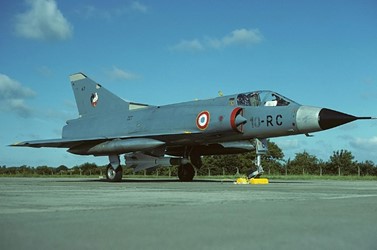 France at least has a base in the area, well almost in the area: Djibouti in Northeast Africa. In June 1985 it is surrounded by USSR bases and sympathisers. Forces in Djibouti include a Foreign Legion Battalion Group, an Air Force squadron equipped with the oldest fighters in the French Air Force’s inventory and some seriously old inshore corvettes.
France at least has a base in the area, well almost in the area: Djibouti in Northeast Africa. In June 1985 it is surrounded by USSR bases and sympathisers. Forces in Djibouti include a Foreign Legion Battalion Group, an Air Force squadron equipped with the oldest fighters in the French Air Force’s inventory and some seriously old inshore corvettes.
Although the political problems of subordinating forces to the USA raised by De Gaulle in 1966 had not gone away there were definitely the first stirrings of the pragmatism that would see French participation in Desert Storm and the return to the NATO command structure in the 1990s. The French could and probably would reinforce anti – Soviet operations threatening the Gulf and hence French national interests.
In terms of forces available; in 1985 they still have conscription, giving a somewhat larger force structure than the UK. In addition, being outside the NATO command structure they are not as bound as the UK to provide permanent standing forces to NATO. Nevertheless, they are a continental power with a definite vested interest in keeping the USSR as far away from the Rhine as possible and outside of the Mediterranean.
What does that mean in strategic terms? Potentially there are substantial reinforcements to be had from France including modern aircraft, some modern shipping and up to 2 light divisions including some armour in the Troupe de Marine. However, all of those come at a cost of reduced capability in the Mediterranean or even in the defence of Europe and therefore with a hefty political price.
The French can produce quite a substantial force, but the political cost will be high. The US Faction player will need to calculate very carefully whether the geographical proximity of any French force will be worth the political points it will cost to employ.
Decisions, decisions the very centre piece of 1985: Sacred Oil.
The United States of America
1985 was a difficult but relatively happy time for the US military. It had been through a process of massive introspection and reflection and was well on the way to rebuilding itself after the traumas of the 1970s. As such, the following factors are all in play:
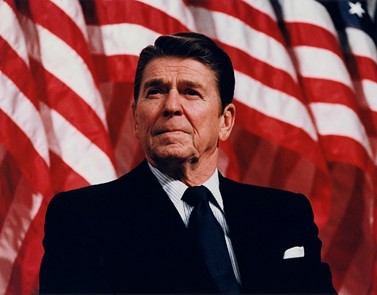 President Reagan has massively increased the defence budget and given the green light to a huge rearmament programme across all four services. Equipment is top notch and getting better, although a lot of the best stuff is in or destined for Europe first.
President Reagan has massively increased the defence budget and given the green light to a huge rearmament programme across all four services. Equipment is top notch and getting better, although a lot of the best stuff is in or destined for Europe first.
Joint Command: the DOD has been told to embrace Joint Doctrine and it is being heavily policed by Congress to ensure that it does. As part of that joint initiative the Rapid Deployment Force (RDF) concept of 1979 became the Joint Rapid Deployment Task Force (JRDTF) in late 1980 which became CENTCOM unified command in late 1983.
CENTCOM has absolute jurisdiction in SW Asia but the forces available to it are in flux to say the very least. They are earmarked but not assigned which means that COMCENTCOM (that’s you) doesn’t train them nor does he know with absolute certainty who he is getting until the day they are required. CENTCOM has identified the Indian Ocean and Gulf as vital to US national interest. It wishes a permanent presence there, yet the best it has achieved until now, is limited recognition by the individual services and a directive from Congress that gives it first call on some forces from all 4 services. That potential “on call” force is as follows:
Turning first to the United States Navy (USN) the USN acknowledged the CENTCOM evaluation of the SW Asian Theatre of operations by establishing Gonzo Station near the Strait of Hormuz, with some limited surface and sub-surface presence permanently stationed there and a single CVBG on, or near there, or passing through, or close by, or, or, i.e. not a permanent presence of the most important naval element. Why was that?
In 1985 the USN permanent structure looks like this: There are two fleets in the Pacific taking on the Soviets in the North Pacific, the US west coast, the China Seas, Sea of Japan, and the whole area between and around the Philippines and Korea. Similarly, there is a fleet in the Atlantic tasked to keep the Atlantic open and challenge the Soviet Kola Peninsula and finally another in the Mediterranean.
Between these four fleets there should be a minimum of 12 CVBG; 6 in the Pacific fleets and 6 in the Atlantic and Mediterranean fleets. A CVBG is based on an Aircraft Carrier with its associated air wing of nearly 70 jets and a defending force of DDG, FFG and an SSN. The doctrinal minimum was therefore 14 carriers allowing one on each coast to be hors de combat for refit at any one time.
Unfortunately, in June 85 the USN doesn’t have 14 carriers to form these CVBG, it only has 13. This shortage of one is exacerbated by the fact one of those thirteen is in the middle of a 3 year Service Life Extension Programme (SLEP), which rebuilds old carriers to modern standards, leaving 12. However 2 further carriers are undergoing their regular refit which lasts 6 months to a year, so they are not available in the time frame of this campaign, leaving just 10 carriers. Yet, even that is not the end as a further carrier has just left SLEP after its 3 year rebuild and is currently 2 months into a 6 month work up programme. It is very definitely non-operational.
Therefore the reality is that there are a mere 9 carriers available. Of these 5 are deployed in the Pacific fleets and 2 in the Atlantic and 2 in the Mediterranean. From those 9 CENTCOM has direct call on 3 of them, a CVBG from the Atlantic, the Pacific and the Mediterranean fleets. Are you going to reduce the US carrier presence in the Atlantic to 1 when operations against the Warsaw Pact are increasingly likely?
Apart from those CVBGs there is a mass of other USN assets to be had. On the surface Battleship (BB) and other Surface Action Groups (SAG), FFG and even MS, underwater there are more SSN but, as you must now expect; all deployments come at a cost, a political points cost. Giving yourself the biggest Navy since Admiral Nimitz in the Pacific in 1945 is eminently doable but likely to cost you the war….
The United States Marine Corps (USMC) has three divisions. One in the Atlantic which is found en masse in DNL with its commitments to the Mediterranean, Norway, and Iceland. The other two are the guardians of the Pacific, Japan, Korea, and all points west. None of these three really fight as divisions. Between them there are 2 Brigades and three single battalions permanently at sea and all the rest are on standby in their home bases. Nevertheless, since 1980 1 MARDIV in California has been on call to the JRDTF and subsequently CENTCOM. It is a very long way from California to the Gulf or elsewhere in CENTCOM’s AOR. To resolve that dilemma the USMC has just started forward positioning the equipment and stores for one Brigade Group or MAB in ships. These are anchored and harboured in Diego Garcia so at least the coalition can find one brigade within 4,000km of the AOO. Oh yes and there are planes as well, as each MARDIV has associated fixed and rotary Air Wings. Almost all USMC come with their own air packages and plentiful helicopters.
The available USMC pieces are powerful but they take time to assemble, and for the bulk of them they need to have a port to offload equipment with an attached air base to fly the men to. Naturally only one that one Brigade in California is “free of charge”!
The United State Air Force (USAF) is fun and very complex. It is also really powerful with some excellent assets. COMCENT nominally has first call on 4 wings of fighters and 2 wings of F111. In addition, he can request further squadrons from any of the air forces in CONUS or Europe. Finally, there is the possibility to request federalisation of elements of the Air National Guard (ANG) and the call up of USAF reserves. All is doable by the President but every single aircraft bar those initial squadrons has another role, or its pilot has another job. What cost is there to call on these planes and where do you put them once you have them? Where are you going to base 18+ (or is that plus plus?) squadrons that is in range of the AOO? You are going to have to play “supporting cards” to gain access to Gulf airbases and transport a lot of supply!
On the plus side you do have the only squadron of Tomahawk cruise missile armed B52s in the world!
Finally, the United States’ Army. As far as the Army is concerned XVIII Airborne Corps with 82 Airborne Division and 101 Airmobile Division is at first call to CENTCOM In addition 9 ID, 10 ID and 24 ID (Mech) are all also on call, although all three are earmarked for other tasks in Europe. All of these divisions are also; either re-rolling from ROAD to Army of Excellence, reforming in the case of 10 ID or retraining and acting as a trials unit when talking about 9 ID. There are elements of the National Guard (NG) in some of these divisions which conspires to make them unavailable in the timescale of these operations, although this is in the process of change. Some are transportable by air, but they require an awful lot of air, while others require civilian shipping to lift their equipment. All of them require tons of stores that have to ship the 10,000 miles from CONUS to SW Asia. Finally, you will note there is only one unit of “heavy metal” to take on the Soviets’ armour but there are potentially a lot of AH1 Cobra attack helicopters. Can you defeat the Soviets with only AH and CAS?
These then are some of the available forces. What mix do you want to defeat an unknown enemy of unknown strength with an unknown objective? More importantly what political price are you prepared to pay and how long do you have to achieve your aim?
And the USSR?
Having read the tale of woe that is the immediately available US faction force, for those who are looking forwards to stamping all over the enemy I urge you to go back and read Fabrizio’s designer notes. This is not GSFG this is not even Central Group or the Northern flank this is the really, really poor country cousin from way out in the sticks.
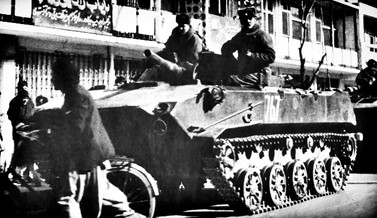 Your good troops are either already in Afghanistan or tied up elsewhere. You can remove them from Afghanistan and watch it blow up in your face or more probably in your rear areas and supply lines. If not in Afghanistan they are in the various western and southwestern military districts, but if you are running this op as a prelude to Operation Lagoda can you afford to remove the Western Theatre’s 2nd Strategic Echelon to mess about in Iran.
Your good troops are either already in Afghanistan or tied up elsewhere. You can remove them from Afghanistan and watch it blow up in your face or more probably in your rear areas and supply lines. If not in Afghanistan they are in the various western and southwestern military districts, but if you are running this op as a prelude to Operation Lagoda can you afford to remove the Western Theatre’s 2nd Strategic Echelon to mess about in Iran.
So that leaves you with Cat II and Cat III divisions that take an age to mobilise. Once they are mobilised you may ask yourself the question; are they a match for the US or even the battle – hardened veterans of Iran? Yet how can you dare ask comrade?
What about allies? Once again, the question is “Which allies”. If you alert the Warsaw Pact NATO will be on you in a flash, perhaps not a flash, but he will be there. If the Warsaw Pact is out then Saddam’s Iraq might be a good choice, but can he help you to conquer Iran quickly enough before the US takes all of his southern regions, the Gulf ports and the oil which is your raison d’etre for being there in the first place. Do you really want a stalemate on the 32nd parallel or some such?
So What About Those Local Inhabitants?
I haven’t yet mentioned Iran, Iraq, or any of the Gulf States, except in passing. Why not? After all, at the start of this campaign the lower map is covered in counters and a bloody war is in its 5th year. Are these non-faction players totally unimportant? No, they are not but they cannot defeat the USSR on their own.
Iran certainly can’t despatch a Saddam Hussein backed by a full Soviet invasion. Conversely without Soviet backing Saddam will not last long against the US let alone the US with the Gulf States, others from the west, and heaven forfend perhaps even Iran (Are we back in 1990 again?). Therefore this campaign is definitely still a form of “NATO vs Warsaw Pact” whose outcome will be decided by the level of effective intervention by Soviet or Western backed troops.
Game Play
How is all that choosing, deciding, strategizing, and planning undertaken and supported. Quite simply it is driven by the event cards system. These are not OPS cards in the classic sense. Neither are they dependent upon the luck of the draw. The choice of card and the order that they are played is entirely up to the individual player. You decide how many tension points you will risk. You decide which forces you want or need. You decide whether you need “supporting” cards rather than “force generators”.
My view is that the event card sub-routine is a genius piece of design, providing both interest and context to those playing a role and ensuring that no two plays of this game will ever be the same.
Strategies
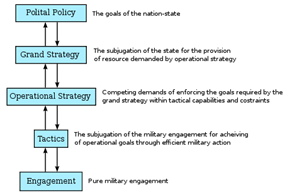 I shall not spend long on this but whether you are Soviet or American you have to devise a strategy at the start of the campaign before a single card is drawn. You then have to stick to it.
I shall not spend long on this but whether you are Soviet or American you have to devise a strategy at the start of the campaign before a single card is drawn. You then have to stick to it.
As the Soviet it is all about the timing of the operations. Where and when you intend to launch your assault upon Iran from? What level of US intervention do you want? How do you achieve that? How do you persuade the US to deploy or not and what level of hurt do you inflict without forcing NATO’s hand?
As the US and her coalition partners you need to decide whether you wish to beat or merely contain the Russian? Do you wish to befriend Iran? How much time can you allow for the build-up of force before beginning aggressive actions?
Both sides need to understand the logistics supporting their strategies. How do I get my things to where I want at the right time? How do I establish the most efficient supply routes possible? More importantly, perhaps, how do I interdict my enemies’ supply routes whilst protecting my own? That is what I deal with next.
The World is Your Oyster, but It’s a Big World!
SW Asia is thousands of kilometres away from both major protagonists’ home bases. Both have great challenges in getting their forces and more importantly the supply for their forces into theatre. The LOC chart came into being in DNL as a method to challenge the US reinforcement of Europe and to allow the USSR to switch forces between the Northern and Western Fronts. As Fabrizio states the LOC in Sacred Oil covers the world.
External events allow the logistic and deployment routes to be established and force each side to think about protecting his strategic lines of supply. External events simplify the action against these LOCs. Afghanistan is a thorn in the Soviet’s side, but it can’t be ignored – it will not go away. The US can even stoke the fires there. As for the three SLOC boxes the USSR faces a real challenge as to how much combat power to place there and when to activate hostilities at sea, with all the ramifications for the NATO – WP relationship?
Other Developer’s Problems
There were huge challenges during development, only a portion of which have been addressed here. However, there are some key principles that I wish to list:
-
Keeping it combinable with UAIS and DNL was and is a challenge but it is key as we definitely see the game series as a trilogy.
-
Having countries (including all key countries) in several differing factions simultaneously each with differing relations with the other factions was a major challenge. How do you ensure that a rule rewards appropriate and “historically correct” behaviour without either making the rules so complex or restrictive they become unplayable or conversely, opening the gates to every gamey play under the sun. We have worked hard to ensure the former at the expense of the latter.
If there is any doubt as to whether something might be allowed or not, I used the example of Turkey in 2003 at the beginning of the second Iraq war as my benchmark.
-
As a member of NATO Turkey requested and was provided with extra PATRIOT SAM batteries from Germany and Holland to defend her airspace.
-
At the same time other NATO allies such as the US was banned from using Incerlick airbase to bomb targets in Iraq and the US and UK forces were not allowed to stage through northern Turkey to attack Iraq.
My Conclusions
I have stated in my notes to every module that I have helped to develop for Thin Red Line that my priority is to give each side a chance to make the decisions whilst maintaining as much “accuracy” as possible. This has been a challenge, but the creative rule writing of Fabrizio has meant that it was a challenge that I believe we have conquered.
Big choices, grand strategies and sweeping movement over huge maps. What more could any Grognard ask for? I liked UAIS, I loved DNL, but I think this might well become my favourite. The event cards’ choices and the global nature of the SLOCs give it a depth that really works for me – but then I would say that wouldn’t I!
This is going to be the most interesting of the series, with the most replay value. The diplomatic battle will really make this a fun game. Cant wait to see it.
Joe
Great article Fabrizio. Question.. how difficult would it be to add a real-life Desert Shield/Desert Storm scenario(s) to this last game of your series?
Probably as difficult as adding a world war 2 scenario to this game…completely different backgrounds…
The map doesn’t cover completely the “left hook” area, so it would need a small expansion. The land order of battle would also need some retouch, as by 1991 most of the US forces had M1/M2/M3, MRLS and Stinger fully operational. Navy would need at least one additional carrier available.
In short, quite difficult
Yes, it would be too much. My preference would have included the eastern med. and done some israeli scenarios and beirut and 6th fleet.